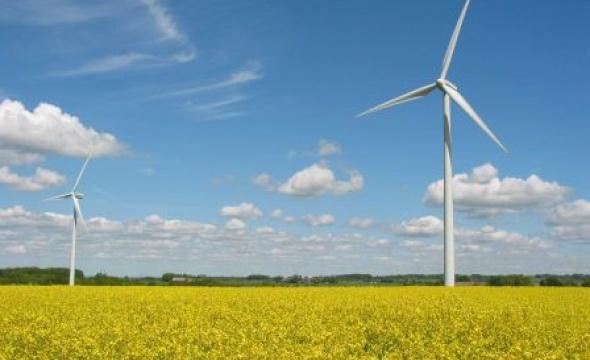
Evaluation of sound production of wind turbines and immission values in the environment
Edwin Nieuwenhuizen: "wind turbines are regarded as an environmental friendly way of generating electric power, but its wide application is often obstructed by the negative acoustic effects on the environment. Balancing the advantages and negative side effects requires a thorough knowledge of the way turbine noise is generated, propagated and experienced by people living nearby. M+P cooperates with our colleagues within the Müller-BBM group to develop evaluation tools and applications for turbine manufacturers, energy companies and local communities”.
Prediction of the noise production of a wind turbine
M+P is involved in the development of the noise regulations for onshore wind turbines in The Netherlands. Since 2011 wind turbine noise is assessed utilising the two indictors Lden and Lnight where both indicators stand for the environmental noise levels averaged over one complete year. Since the sound production of a wind turbine depends strongly on the wind speed at hub height, understanding wind speed statistics at higher elevations is essential. Hub heights of 80 to 120 meters of modern wind turbines can exceed the ceiling of the boundary layer at night. In such instances wind statistics cannot be derived from 10 meter height data, and special modelling is required. We prepared a web based tool to calculate the relevant parameters for long-term wind data from the Royal Dutch Meteorological Institute. A link to the wind tool can be found here.
Design and optimization of wind farms
The effects of wake flow on power production, shadow flicker and noise exposure at the dwellings should play an important role while planning and designing wind farms. The development is often an iterative and time consuming process where the farms’ layout, turbine spacing, hub height, type and number of turbines are to be varied. In some situations it may be useful to limit the noise generated by turbines that are closest to the dwellings. Mitigation can be achieved by setting a noise mode for those turbines. All in all, the environmental impact should be assessed for a number of design variants. To facilitate fast optimization, M+P developed a Dynamic Noise Model. This tool allows calculation of lots of varieties with only a single click of a button. After preparation of the models’ input data, noise assessment can be performed by planners without time consuming calculations.
Noise measurements
In some cases the turbines sound power needs be verified by measurements at representative wind speeds. In the field of verification and enforcement the Dutch legislation fits well with IEC 61400-11: 2012. This measurement concerns synchronous data acquisition of multiple signals, including the turbines RPM. The measurements are complex, but with our proprietary software, we can provide you with fast and reliable results.
Added value of M+P
The tension between efficiency and noise pollution will probably not disappear in the near future. With our approach, we want to ensure that the support for this form of green energy will be retained. What has M+P to offer?
- knowledge of the applicable laws and regulations;
- understanding of how noise is generated and propagated;
- effective communication with local authorities;
- experience with multichannel measurements.
